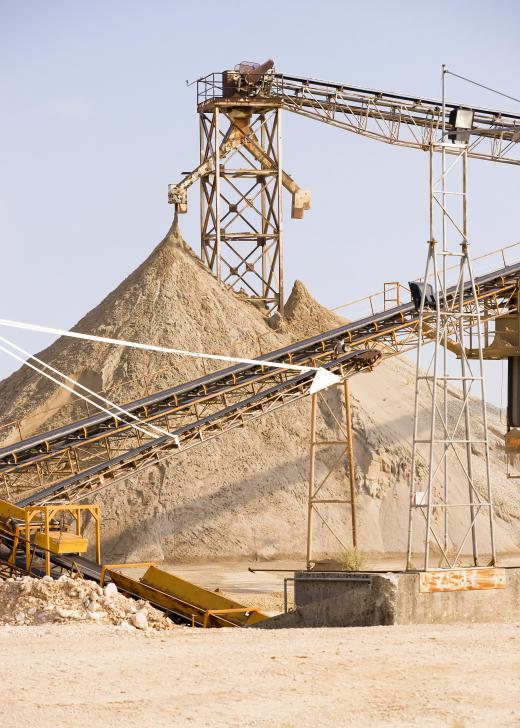What Is the Angle of Repose?
Angle of repose is a term used in science and engineering and can have two related meanings. It is generally used to describe the maximum angle, measured upwards from the horizontal, at which a pile of a particular granular material will remain stable without any of the material sliding downward. It can also refer to a combination of a ramp or other slope and an object resting upon it. In this case, it is the maximum angle at which the ramp or slope will support the object without it sliding downward. In either case, the critical angle of repose, as it is more properly known, will always be greater than 0° and less than 90°, and most materials will have one of 45° or less.
Any material of a granular nature, even when the individual units are very large, like chunks of broken concrete or boulder sized rocks, naturally forms a pile in the shape of a cone when deposited on a flat surface from a height. The natural profile of this cone will approximate the angle of repose for that particular material or mixture. Very small or smooth granules that exert little friction on each other will tend to form piles with shallower sides. Rougher granules or those that adhere to each other strongly tend to form piles with steeper sides and a higher angle. Moisture content also significantly affects this measurement for most materials.

Geologists, as well as mining and civil engineers, often use this measurement to analyze slopes and embankments for danger of collapse as well as helping to evaluate potential danger of avalanche. It is useful in designing storage and transportation machinery for granular materials as it can give an engineer insight into the appropriate size and shape of such devices. Civil engineers use the data when designing and managing construction and land management projects, such as levees, dams, and raised roadbeds. Geologists and vulcanologists use it to predict the possible behavior of cinder cones and sand volcanoes, as well as to study processes related to the weathering of rocks and deposition of sediments.
Engineers and scientists use a number of methods to calculate the angle of repose of a granular substance or mixture. Calculations and formulas that employ previously published data are one method, and there are several simple experiments for determining the angle for any substance with small enough grains to be easily handled. Depending on the method and the accuracy of possible measurements, the figures tend to be close approximations rather than exact values, but this does not reduce or eliminate their usefulness.
AS FEATURED ON:
AS FEATURED ON:











Discuss this Article
Post your comments